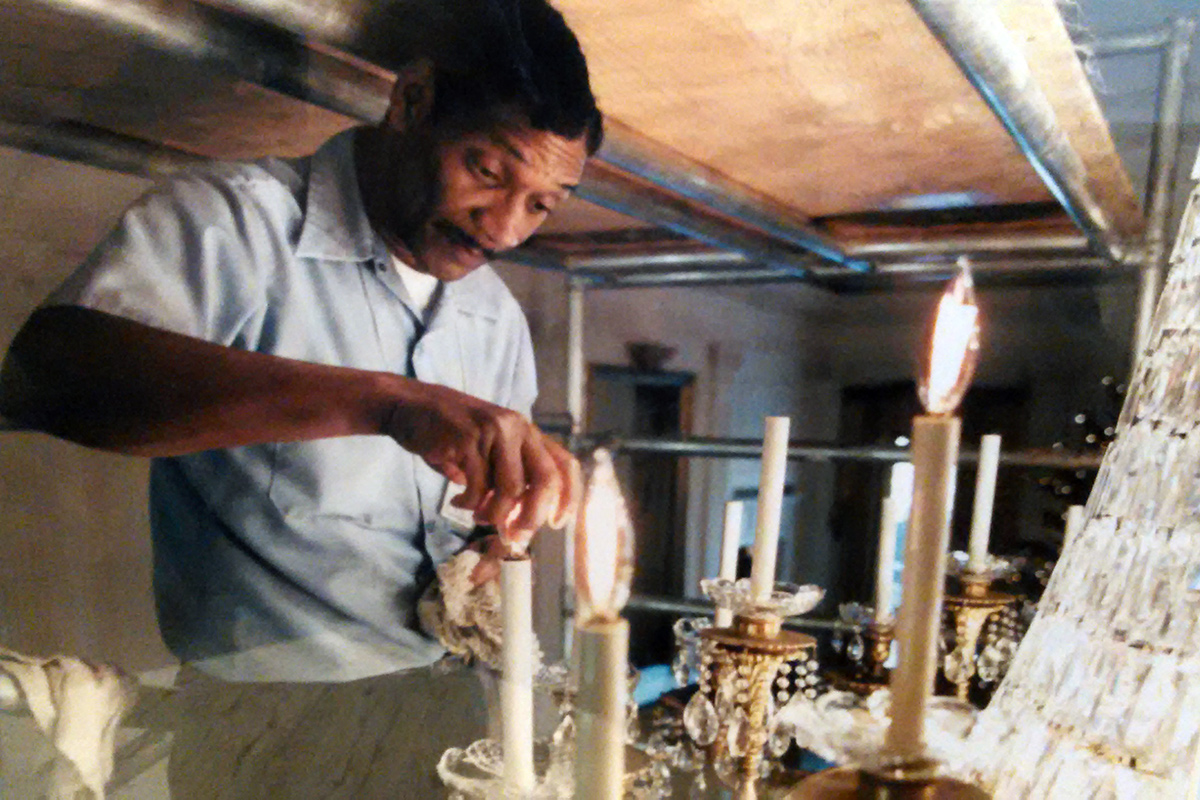Ever since John and Abigail Adams first moved into the “President’s House” in November 1800, the White House has been a uniquely public and private space. It symbolizes the nation’s executive branch, but also serves as a ceremonial center, museum, and family residence. During the past two centuries, thousands of individuals have worked behind the scenes to help the White House fulfill these roles.
While presidents and their families come and go every four or eight years, most of the workers in the White House residence—the butlers, carpenters, chefs, electricians, engineers, florists, housekeepers, plumbers, ushers, and more—stay on, helping new presidents adjust to life at 1600 Pennsylvania Avenue. Although they remain relatively invisible to the general public, the individuals who work at the White House constitute a highly distinctive occupational culture in an exceptional work environment. Like the members of other occupational groups, they share their own particular skills, specialized knowledge, and codes of behavior that not only distinguish them from other occupational groups, but that also meet their needs as a community.
Accordingly, curators and researchers at the Center for Folklife and Cultural Heritage—as part of our longstanding interests in folk groups—have studied this particular occupational group since the early 1990s. The results have included a Folklife Festival program and thirty-minute documentary film on White House workers in 1992, an exhibition that traveled to presidential libraries in 1993, a second exhibition that traveled to museums from 2008 to 2011, and a DVD titled White House Workers: Traditions and Memories.

The one condition imposed by White House staff is that current employees are “off-limits” to our staff. Only those who had already retired from active service at the White House could be interviewed. The publication of The White House Chandeliers: My Experiences While Working for Seven U.S. Presidents led us to Stewart Stevens Sr., living in retirement in Upper Marlboro, Maryland. We visited Stevens at his home earlier this year to learn more about his fascinating career.
Born in March 1938 in the suburbs of Washington, D.C., Stevens grew up in the District and joined the National Guard at age sixteen. He trained as a military police officer and saw service at several army bases in the United States, as well as in Heidelberg, Germany. After returning home, he looked for work in D.C.’s police and fire departments, but encountered racial discrimination. Instead, Stevens and his brother started a window-washing business that brought them inside many federal government buildings.
While washing windows one day inside the New Executive Office Building, Stevens was asked if he might like to wash windows in the White House. He said yes, passed the necessary security clearances, and became full-time White House staff during the administration of President Richard M. Nixon.
However, washing windows alone was not enough to keep Stevens busy, so he asked if he could also clean the chandeliers, which looked like they had not been cleaned in many years. Rex Scouten, the chief usher who oversaw all White House workers, warned Stevens, “I’m going to tell you now, they’re really expensive. So if you break one, you’re gone!”
Stevens was not deterred.


Camera: Charlie Weber
Interview: James Deutsch, Charlie Weber, Greg Adams
Special thanks: Lynetta Stevens
“The way I did it [is] I worked it from the top down,” he explained. “I took all the pieces off, washed all of them, polished all of them, cleaned the bulbs and things out, polished all the pieces, and then I would put them right back where they came from.” He used a chamois to polish the pieces, a white Turkish towel to dry the pieces, and a bit of ammonia in hot water. “I would take my chamois, and hold a piece of the crystal up, and I would run it through my fingers, and that’s how I would make them shine—polishing them really. They just stood out, they were so beautiful, and everybody talked about it.”
Indeed the improvement in the appearance of the chandeliers was startling. Stevens noted, “People said that they looked like diamonds and were picking up colors all over the place.”
From that moment on, Stevens had found his calling. He cleaned all the White House chandeliers for every president from Nixon through Gerald Ford, Jimmy Carter, Ronald Reagan, George H.W. Bush, Bill Clinton, and George W. Bush. Cleaning a single chandelier might take eighteen hours, but, of course, Stevens performed other tasks as well—helping out wherever he could.
As Stevens explained, “We all got along very good because we all worked together. . . . We were like a big happy family. None of us had any problems with each other. We bowled together, [and] on each side of the alleys were mirrors, all the way down on both sides—had to keep all that glass clean. But, getting back to us all being close, everybody—the flower shop, the painters, carpenters, plumbers—everybody was real nice. . . . On the job, all was like a family. And every time they needed somebody to do some work or something or other, we would all chip in and go get the job done!”
Stevens has been back to the White House a couple of times since retiring in 2002, and once even tried to get up to the second floor to “see how the chandeliers were doing.” However, he was stopped by the Secret Service because he no longer had the necessary security clearance. One can only hope that the chandeliers still gleam like diamonds.

James Deutsch is a program curator at the Center for Folklife and Cultural Heritage. He co-curated the traveling exhibition, The Working White House: 200 Years of Traditions and Memories, and is the author of “Pomp, Protocol, and Monarchical Manners: State Dinners at the White House,” published in the Journal of American Culture (2010).


